As Russia’s 30-Hour Easter Truce Falters Amid Continued Shelling, Ukraine Proposes Extending Ceasefire to 30 Days While Historic Prisoner Exchange Brings 277 Defenders Home
Summary of the Day – April 19, 2025
Putin’s theatrical 30-hour Easter truce crumbled almost immediately as Russian forces continued shelling across Zaporizhzhia, Kharkiv, Sumy, and Odesa on April 19. Zelensky seized the diplomatic high ground, proposing to extend the supposed ceasefire to a full 30 days to “give peace a chance,” while Russian attack drones flew over Ukraine just 45 minutes before the truce was set to begin. In a rare positive development, Ukraine and Russia conducted the largest prisoner exchange since 2022, with 277 Ukrainian defenders returning home through UAE mediation. Meanwhile, Trump’s patience with peace negotiations appears to be wearing thin, with the U.S. president threatening to “take a pass” if either side makes concluding a deal “difficult.”
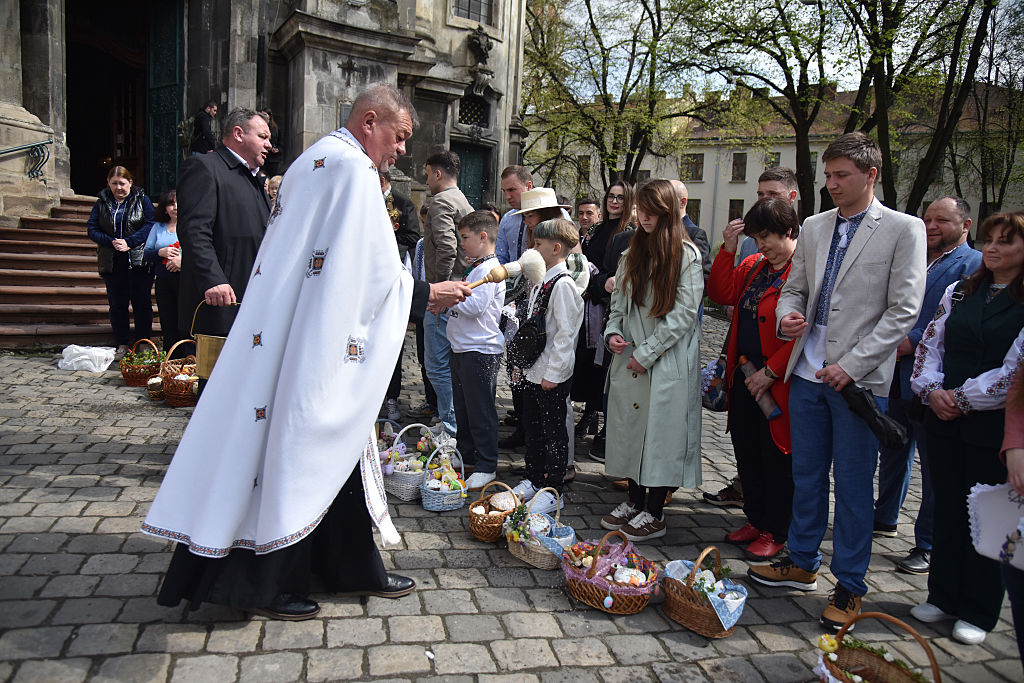
People wait as their baskets of Easter cakes are being blessed at the city’s churches on the eve of Easter in Lviv, Ukraine. This year, Christians of Western and Eastern Rites will celebrate Easter at the same time on April 20. (Michael Sorrow / Anadolu via Getty Images)
Easter Ceasefire or Strategic Facade? Putin’s Truce Fails to Hold
In a televised meeting with Russian Chief of the General Staff Valery Gerasimov on April 19, Russian President Vladimir Putin ordered a 30-hour Easter ceasefire starting at 6 p.m. Moscow time on April 19 and ending at midnight on April 21. Putin claimed the temporary truce would demonstrate Ukraine’s willingness to comply with agreements and engage in negotiations “aimed at eliminating the root causes of the Ukrainian crisis”—a phrase Russian officials typically use to refer to their demands for NATO to abandon its open-door policy and for regime change in Ukraine.
Within hours of the announced truce, Ukrainian Commander-in-Chief General Oleksandr Syrskyi reported that Russian forces continued assault operations and shelling in several areas along the frontline. According to President Zelensky, Russian attack drones were spotted in Ukrainian airspace at 5:15 p.m. on April 19—just 45 minutes before the ceasefire was supposed to begin.
“The presence of Shahed drones over our territory shows Putin’s true attitude toward Easter and human life,” Zelensky stated.
Ukrainian Foreign Minister Andrii Sybiha expressed similar skepticism: “Unfortunately, we have considerable experience when his statements did not coincide with his actions. We know that his words cannot be believed, and we will look at actions, not words.”
Despite Russian violations, a senior Ukrainian military officer told the BBC’s Russia service that Ukrainian units received orders to cease fire on Russian positions shortly after Putin’s announcement. The troops were instructed to document evidence of any Russian violations and return fire only if necessary.
The Ukrainian Air Force reported that Russia deployed eight missiles of different types and 87 long-range drones on April 19—33 of which were shot down and 36 turned out to be decoys. The night before the supposed truce began, Russian forces conducted a series of missile and drone strikes, launching three Iskander-M ballistic missiles and two Onyx anti-ship cruise missiles from occupied Crimea, along with three Kh-31P anti-radar missiles from an unspecified location.
From Hours to Days: Zelensky’s Challenge to Extend Ceasefire to 30 Days
In a strategic countermove, President Zelensky proposed extending Putin’s 30-hour truce to a “complete and unconditional” 30-day ceasefire if Russian forces actually cease all military operations as promised.
“This will show Russia’s true intentions, because 30 hours is enough for headlines, but not for real confidence-building measures. Thirty days can give peace a chance,” Zelensky stated on April 19.
The 30-day ceasefire proposal isn’t new. The United States and Ukraine jointly proposed implementing an immediate month-long full ceasefire to Russia on March 13, but Putin and other Russian officials have repeatedly rejected the idea.
Zelensky pledged that Ukraine would “mirror” Russia’s response, adding that Ukrainian forces would provide “an adequate response to every Russian strike.” This approach echoes the Biden administration’s concept of “responsive defense,” where Ukraine retaliates proportionally to Russian actions rather than pursuing escalation.
The proposal puts significant pressure on Putin, forcing him to either expand what many see as a public relations stunt into a meaningful peace gesture or reveal his lack of genuine interest in de-escalation.
Freedom at Last: Historic Prisoner Exchange Returns 277 Ukrainian Defenders
In the largest prisoner exchange since Russia’s full-scale invasion began, 277 Ukrainian prisoners of war returned home on April 19, just in time for Easter celebrations. The United Arab Emirates mediated the swap, which included 246 POWs exchanged on a one-for-one basis with Russia, plus an additional 31 Ukrainian servicemembers released outside the main exchange.
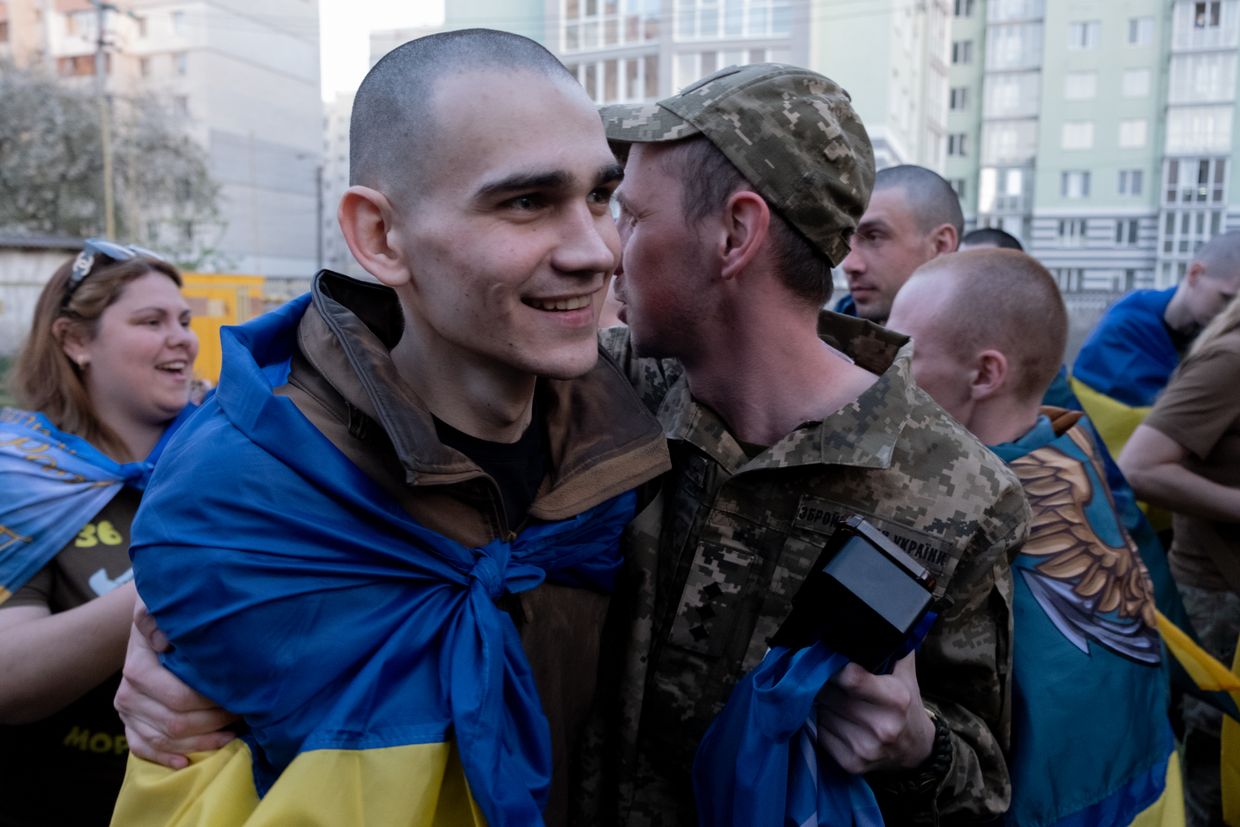
Ukrainian POWs arrive inside Ukraine after being released from captivity in a prisoner exhange with Russia. (Francis Farrell/The Kyiv Independent)
“I thank everyone who made this return of our people possible,” Zelensky said. “I am especially grateful to the United Arab Emirates for their mediation.”
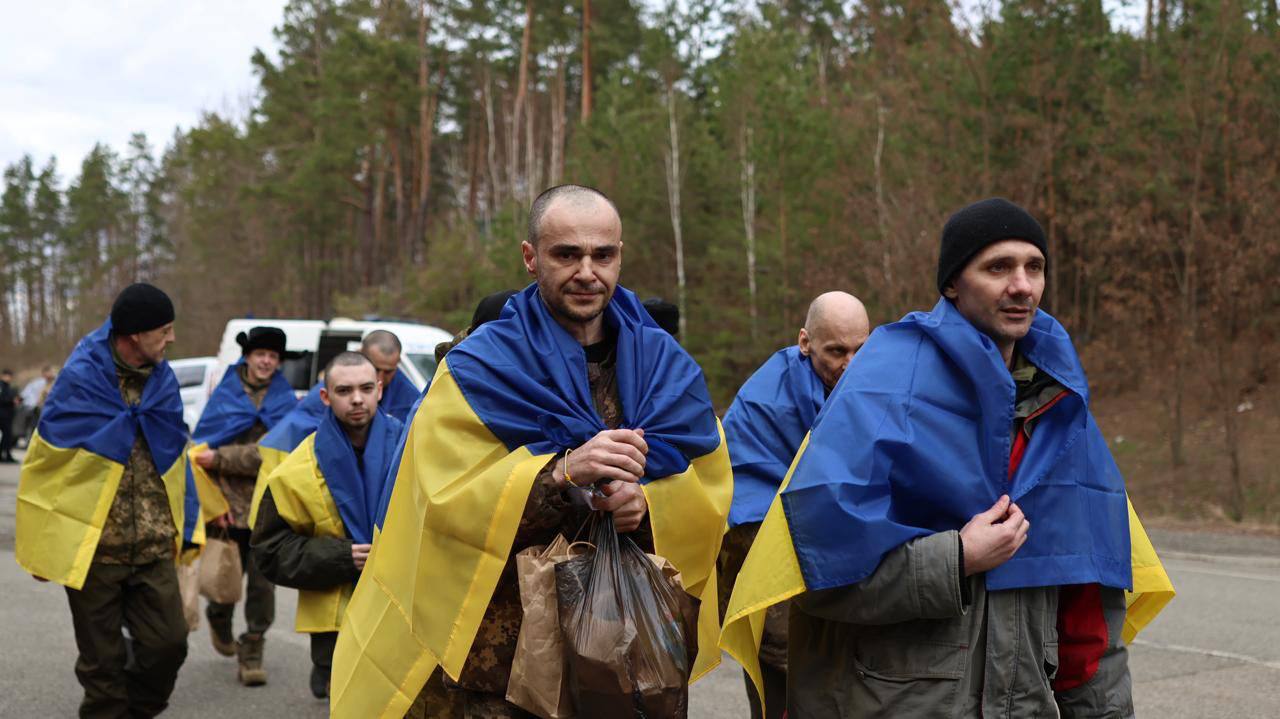
One hundred and seventy-five Ukrainian soldiers returned home from Russian captivity as part of a one-for-one exchange. (Volodymyr Zelensky / Telegram)
The released Ukrainian defenders included those who participated in the defense of Mariupol and battles in Donetsk, Kherson, Zaporizhzhia, and Luhansk oblasts. According to the Coordination Headquarters for the Treatment of Prisoners of War, the returnees comprised nine officers and 268 privates and sergeants, with most belonging to the Marine Corps—especially those captured during the siege of Mariupol in April 2022.
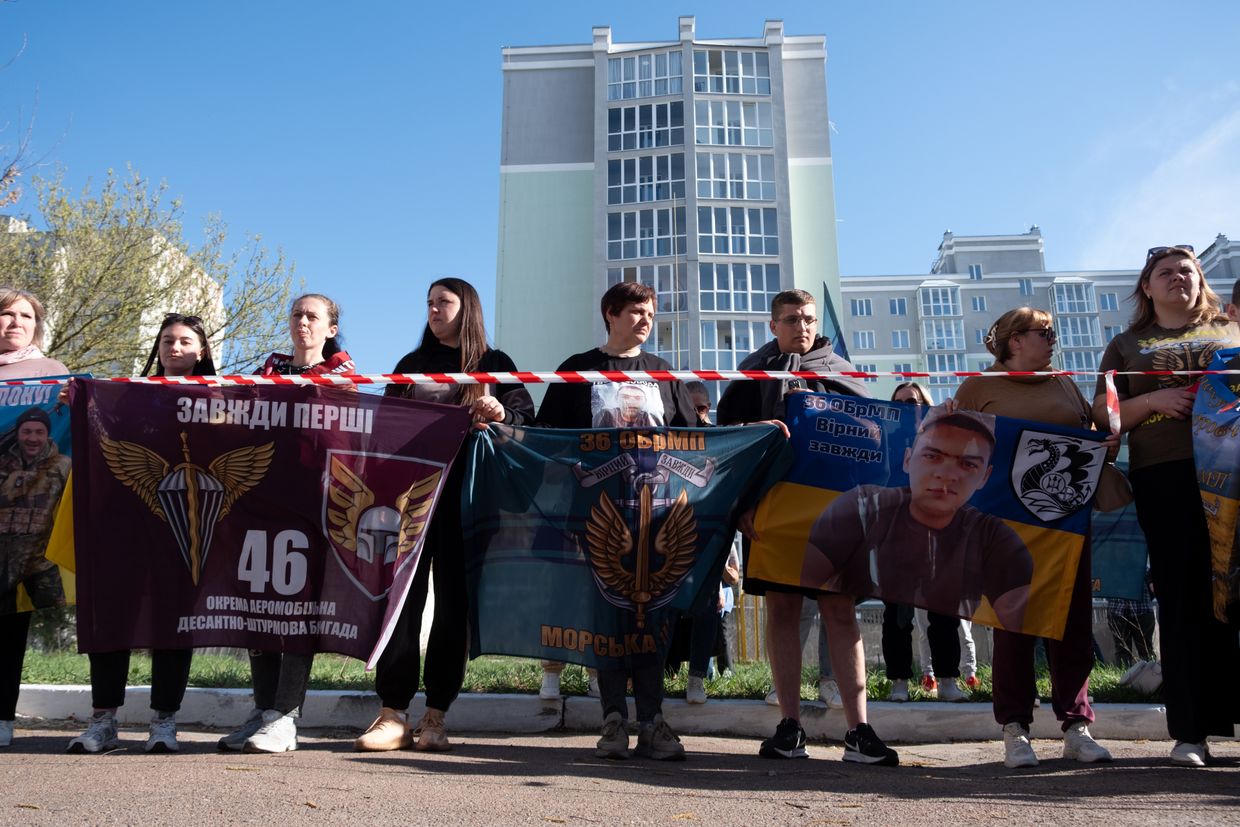
Friends and relatives of Ukrainian prisoners of war wait for the arrival of released POWs after a prisoner exhange with Russia. (Francis Farrell/The Kyiv Independent)
Since Russia’s full-scale invasion began in February 2022, Ukraine has secured the return of 4,552 people from Russian captivity, including both military personnel and civilians. However, according to Ukrainian Ombudsman Dmytro Lubinets, Russia still holds over 16,000 Ukrainian civilians in detention.
Trump’s Diplomatic Ultimatum: “Take a Pass” If Peace Process Stalls
U.S. officials are reportedly growing frustrated with the Kremlin’s rejections of U.S. proposals to end the war. According to The New York Times, Russian officials have “dragged their feet” and insisted on additional conditions for President Trump’s proposed unconditional general ceasefire, including the “denazification” of Ukraine—a term Putin has used since February 2022 to call for regime change in Ukraine and the installation of a pro-Russian proxy government.
Axios reported on April 18 that U.S. Secretary of State Marco Rubio told UK, German, and French diplomats that President Trump is “losing his patience” and may withdraw from the peace process if a deal is not concluded “soon.”
Trump himself stated on April 18 that he hopes to conclude a peace deal in Ukraine “quickly” and that if either Ukraine or Russia “makes it very difficult,” then “we’re just going to take a pass.”
The ultimatum represents a significant shift in the U.S. approach, potentially leaving Ukraine in a precarious position if American diplomatic support diminishes. However, it also increases pressure on Russia to demonstrate flexibility in negotiations or risk losing what Putin perceives as a more favorable mediator than previous U.S. administrations.
Territorial Chess: Ukrainian Advances in Belgorod as Russians Push Near Pokrovsk
President Zelensky claimed on April 19 that Ukrainian forces have advanced in Russia’s Belgorod Oblast, citing a report from Commander-in-Chief Syrskyi. “Our forces continued their activity in Kursk Oblast today and are maintaining their positions. In Belgorod Oblast, our military advanced and increased our zone of control,” Zelensky said.
Ukraine launched a small-scale offensive in Belgorod Oblast in late March, marking Kyiv’s second cross-border operation after the August 2024 Kursk incursion. According to geolocated footage analyzed by the Institute for the Study of War, Ukrainian troops have entered the village of Popovka, which lies near the Ukrainian border and Kursk Oblast.
Meanwhile, Russian forces have recently advanced near Toretsk and Pokrovsk. Geolocated footage published on April 16 and 18 indicates that Russian forces advanced west of Toretsk and east of Dachne (northeast of Toretsk). Additional footage from April 19 shows that Russian forces seized Novotoretske and advanced in central Myrolyubivka (both east of Pokrovsk) during a company-sized mechanized assault on April 17.
Ukrainian forces have not been entirely on the defensive, however. Geolocated footage published on April 19 indicates that Ukrainian forces recently advanced in southwestern Lysivka (southeast of Pokrovsk).
Fighting has been particularly intense in Zaporizhzhia Oblast. Governor Ivan Fedorov reported on April 19 that Russian forces conducted 328 strikes across 12 settlements, including eight airstrikes, more than 200 drone assaults, and over 100 artillery attacks. A 74-year-old man was injured, and a fire broke out at a vehicle depot in Zaporizhzhia city following a drone strike. Another attack in the village of Mahdalynivka damaged residential buildings.
Motorcycles and Martyrs: Russia’s Evolving Battlefield Tactics
Ukrainian Luhansk Group of Forces Spokesperson Lieutenant Colonel Dmytro Zaporozhets reported on April 19 that Russian forces have changed tactics in the Toretsk direction, increasingly conducting motorized assaults on motorcycles.
“They attack in groups of three to five motorcycles and use soldiers on motorcycles for different functions—to conduct assaults, to clear mines, and to tow infantry,” Zaporozhets explained. This tactic allows Russian forces to rapidly advance through fields and consolidate positions without additional reinforcements.
In another concerning development, Ukrainian monitoring group DeepState reported on April 18 that Russian troops are solidifying their presence in the village of Kalynove in Donetsk Oblast as they prepare for an advance toward Stara Mykolaivka and the road to Kostiantynivka. New Russian drone crews, previously active in battles in Russia’s Kursk Oblast, have reportedly arrived in the area, giving Russian forces the ability to operate drones deep enough to reach Kostiantynivka—a key logistical hub for the Ukrainian military in Donetsk Oblast.
In Kharkiv Oblast, the city of Kupiansk was struck by 10 guided aerial bombs on April 19, including a high-powered thermobaric ODAB-1500, according to Governor Oleh Syniehubov. Five civilians were injured as a result of the attacks. In Kharkiv city’s Kyivskyi district, a Shahed drone hit a residential area. Meanwhile, in Sumy Oblast, Russia shelled border communities 56 times, with 143 explosions recorded overnight. The attacks damaged homes, utility buildings, and vehicles across multiple settlements, though no casualties were reported.
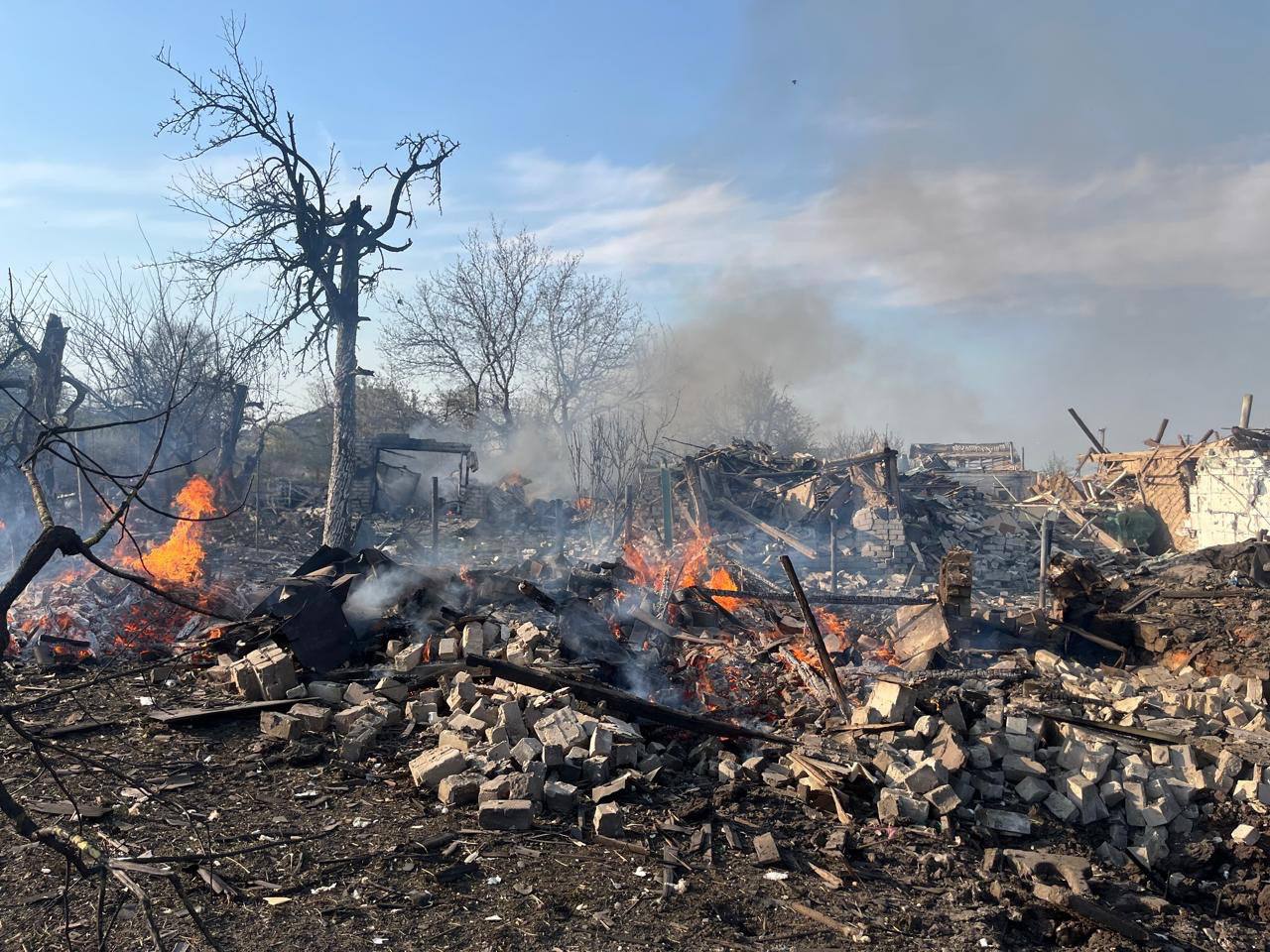
The aftermath of a Russian missile attack on Kharkiv Oblast, Ukraine. (Oleh Syniehubov/Telegram)
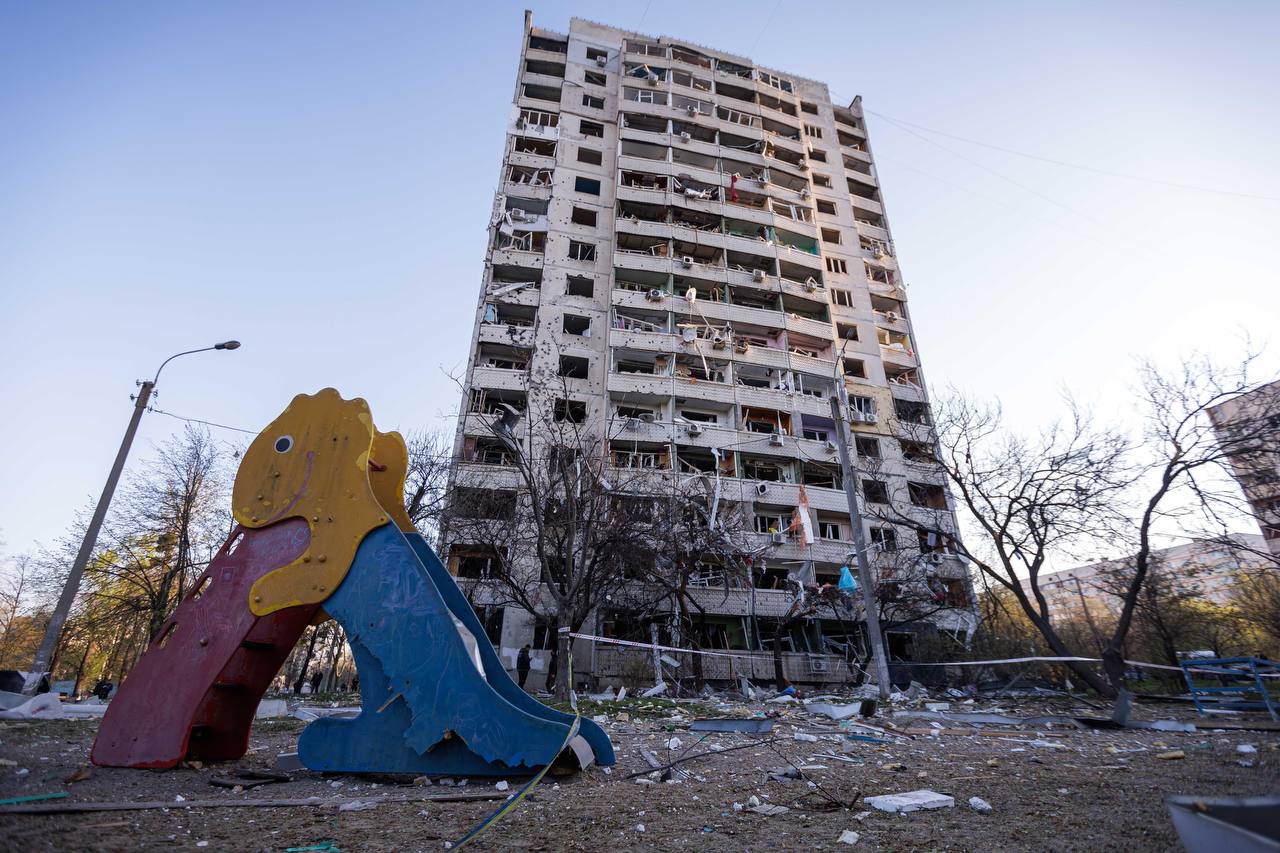
Photo of a damaged building after Russian missile attack on Kharkiv. (Oleh Syniehubov/Telegram)
Kremlin’s Fortress Mentality: Military Families Flee Occupied Crimea
The Crimea-based Ukrainian partisan group “Atesh” reported on April 19 that almost all families of senior Russian Black Sea Fleet military officers have left occupied Sevastopol. According to Atesh, Russian forces received a new directive in early April 2025 to implement additional security measures, including increased patrols by BARS (Russian Army Combat Reserve) personnel and the cancellation of leave for military personnel stationed in occupied Crimea.
This evacuation of military families suggests growing concern within Russian command about Ukraine’s increased strike capabilities and potential operations targeting the peninsula. The move comes amid Ukraine’s successful deep strikes across Russian territory and the expansion of cross-border operations in Belgorod Oblast, which may have prompted Moscow to reassess security vulnerabilities in occupied territories.
The exodus marks a significant shift in Russian military posture in Crimea, which Russia has occupied since 2014 and has used as a key staging ground for naval operations throughout the full-scale invasion. The departure of high-ranking officers’ families could indicate preparations for intensified military activities or concerns about Ukrainian counteroffensive operations targeting the peninsula.
Agricultural Impact: Russian Strikes Target Ukrainian Farming Enterprises
Russian attacks across Ukrainian regions on April 19 inflicted damage on critical agricultural infrastructure, potentially threatening food security amid the planting season. In Odesa Oblast, Russian strikes damaged several farming enterprises, according to the State Emergency Service of Ukraine, though no casualties were reported. The timing of these attacks is particularly concerning as Ukraine’s farmers are in the midst of crucial spring planting operations.
In Zaporizhzhia Oblast, the extensive military activity reported by Governor Ivan Fedorov—including 328 strikes across 12 settlements—has severely disrupted agricultural activities in one of Ukraine’s most productive farming regions. The attack on the village of Mahdalynivka damaged not only residential buildings but also supporting infrastructure vital to agricultural operations.
These strikes appear to target Ukraine’s agricultural capacity, which remains crucial not only for domestic food security but also for global markets, as Ukraine continues to be a significant exporter of grain and other agricultural products despite wartime challenges. The damage to agricultural facilities represents another dimension of Russia’s strategy to undermine Ukraine’s economic resilience and self-sufficiency.
Deep Strike Evolution: Ukraine’s Growing Capacity to Hit Russian Territory
Ukrainian intelligence officials claim that Ukraine’s ability to strike deep into Russian territory is growing, primarily due to improved intelligence networks rather than technological breakthroughs. Brigadier General Yuriy Shchyhol of Ukraine’s Main Intelligence Directorate (HUR) stated that more Russians are willing to help Ukraine, even to the point of setting up navigation equipment waypoints deeper inside Russia.
“The first thing is the quality of guidance systems that are located on their territory, from which you can gather that there are a lot more traitors on their land than they can recruit in Ukraine,” Shchyhol explained in a recent interview.
While Russia has more domestic manufacturers of high-end components like inertial guidance systems and controlled pattern reception antennae (CRPA), Shchyhol claims that Russia’s drone game has largely stagnated: “If in 2022 the Shahed was considered the peak of unmanned aviation, today, the Shahed has basically not changed, especially when it comes to navigation and guidance.”
Ukraine’s deep-strike capabilities were recently showcased when President Zelensky announced that the “long Neptune,” a domestically made cruise missile, had traveled over 3,000 kilometers into Russia. These enhanced capabilities provide Ukraine with a critical asymmetric advantage as it continues to defend against a numerically superior enemy.
In a notable attack on April 19, Ukrainian drones struck the Kavkazskaya oil pumping station in Russia’s Krasnodar Krai. According to Russian authorities, the strike damaged a pipeline connecting storage tanks, igniting a fire that covered approximately 20 square meters. Thirty on-duty personnel were evacuated, and the facility suspended operations, though no casualties were reported. The Kavkazskaya facility is a critical component in Russia’s energy export infrastructure, connecting a railroad oil terminal and the Kropotkinskaya oil pumping station, and forming part of the Caspian Pipeline Consortium system, which pumps up to 6 million metric tons of oil annually.
International Response: UK and Italy Urge Russia to Accept Full Ceasefire
The foreign ministries of the United Kingdom and Italy urged Russia to accept an unconditional ceasefire in separate statements on April 19, hours after Putin declared his temporary Easter truce.
“Ukraine has committed to a full ceasefire. We urge Russia to do the same,” a UK foreign ministry spokesperson said, according to Reuters. “Now is the moment for Putin to show he is serious about peace by ending his horrible invasion.”
Italian Foreign Minister Antonio Tajani echoed this sentiment: “It is not clear how Russia will respect a short truce, while Putin must make up his mind to finally stop this war he started. He must respond positively to President Trump’s demands and make a real ceasefire possible.”
These statements reflect growing international skepticism about the sincerity of Putin’s ceasefire offer, as well as mounting pressure on Russia to engage meaningfully with U.S.-led peace efforts.
The Ukrainian government on March 11 said it was ready to accept a U.S. proposal for a complete 30-day ceasefire, provided Russia agrees to the same terms. However, Russia continues to reject the proposal unless Ukraine makes extraordinary concessions—including a halt to all foreign military aid.
Sacred Targets: Zelensky Reveals Over 600 Religious Sites Destroyed in War
More than 600 religious sites in Ukraine have been destroyed since the start of Russia’s full-scale invasion, President Zelensky revealed on April 19, ahead of Easter celebrations.
“For millions of Ukrainians, Easter is one of the most important holidays. And millions will be going to churches. Unfortunately, many will go to churches that have been damaged,” Zelensky said.
The president added that at least 67 Ukrainian priests, pastors, and monks “were killed or tortured by Russian occupiers” during the war. Despite the destruction, Zelensky expressed determination to rebuild: “Just as we are liberating priests and pastors from Russian captivity, just as we are doing everything to protect Ukrainian cities and villages and the lives of people in them, we are restoring the ability to believe—to believe that evil and destruction will not prevail.”
The timing of Putin’s Easter ceasefire announcement is particularly cynical given Russia’s pattern of attacks during major Orthodox holidays. Zelensky emphasized that Ukraine will rebuild all damaged religious sites, underscoring that the nation’s spiritual resilience remains unbroken despite Russia’s attempts to target symbols of Ukrainian cultural and religious identity.
American Solidarity: U.S. Congressman Visits Ukrainian Front Line
U.S. Congressman Brian Fitzpatrick, a pro-Ukraine Republican representing Pennsylvania, visited Ukrainian troops near the front line on April 19, following his meeting with President Zelensky in Kyiv.
“These are amazing soldiers, the men and women of the Ukrainian military, much like the men and women of the U.S. military, have this amazing fighting spirit. They’re fighting for their democracy, they’re fighting for freedom—all of us in America need to stand behind them,” Fitzpatrick said in a video address filmed on the front line.

U.S. Congressman Brian Fitzpatrick, a pro-Ukraine Republican representing Pennsylvania, visited Ukrainian troops near the front line, following his meeting with President Volodymyr Zelensky in Kyiv. (Congressman Brian Fitzpatrick/Facebook)
During his visit, Fitzpatrick reportedly signed an artillery shell with a message to Russian President Vladimir Putin. He said the group was shelled near the Russian border, tracked by Russian drones, and forced to carry out an emergency evacuation from the area.
“That’s what they do. They overwhelm you with bodies, overwhelm you with artillery with not a lot of thought behind it,” he observed about Russian tactics.
The congressman’s visit serves as a powerful symbolic gesture of continued American support for Ukraine, particularly as some voices in Congress question the extent of U.S. assistance to Kyiv. His firsthand experience on the frontlines provides valuable perspective as debates about Ukraine aid continue in Washington.
The Strategic Game: Interpreting Russia’s Ceasefire Maneuver
Russia’s unilateral implementation of a temporary truce appears designed to introduce conditions that act as a pretext to support continued efforts to undermine and discredit Ukraine. By setting up a ceasefire that it has no intention of fully honoring, Russia can exploit unsubstantiated claims of Ukrainian truce violations to undermine support for the proposed peace framework that the United States presented in Paris on April 17.
The timing of Putin’s announcement—coming shortly after Trump threatened to withdraw from peace mediation—suggests Russia is attempting to curry favor with the United States and portray itself as an agreeable negotiating partner. By making symbolic gestures toward peace without substantive concessions, Putin hopes to maintain the impression that Russia is not the obstacle to a negotiated settlement.
However, the quick unraveling of the Easter ceasefire exposes the hollowness of Russia’s peace rhetoric. As Ukrainian Foreign Minister Sybiha noted, “We have considerable experience when [Putin’s] statements did not coincide with his actions.”
Looking Ahead: The Fragile Path to Peace
As the supposed Easter ceasefire continues to be violated and diplomatic tensions rise, the prospects for a negotiated settlement remain uncertain. President Trump’s threat to withdraw from mediation efforts places enormous pressure on both sides to demonstrate flexibility, but the fundamental obstacles to peace remain unchanged.
Russia continues to insist on conditions—including “denazification” and an end to Western military aid—that Ukraine views as existential threats to its sovereignty and security. Meanwhile, Ukraine’s cross-border operations in Belgorod and Kursk oblasts have created new complications in the territorial equation that any peace deal would need to resolve.
The coming days will reveal whether Putin’s Easter ceasefire gambit represents a genuine, if limited, step toward de-escalation or merely another cynical ploy to divide Ukraine from its Western supporters. Zelensky’s counter-proposal to extend the truce to 30 days presents a clear test of Russia’s intentions, one that Putin seems unlikely to pass.
For now, the war grinds on—even as the diplomatic theater plays out on the global stage—with Ukrainian defenders continuing to pay the price in blood for their nation’s freedom.
